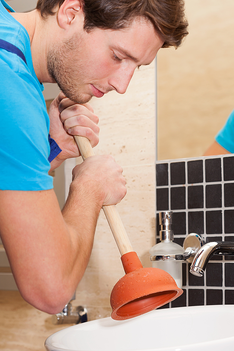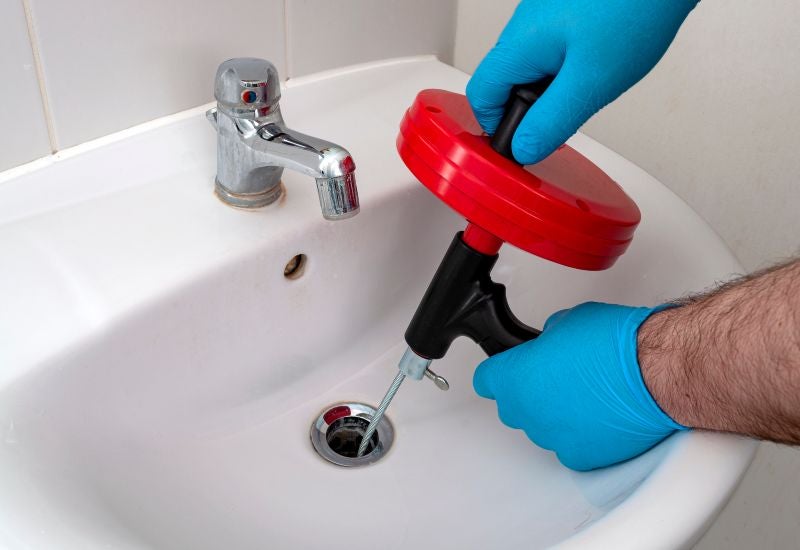Are you currently trying to find additional info around A Guide to Plungers (and How to Use Them)?

Intro
Appropriate upkeep of house drains is vital for stopping obstructions and ensuring smooth water circulation. Among the trick tools in every home owner's toolkit is the bettor, alongside different drain cleansers developed to take on persistent blockages successfully. This short article explores how to use bettors and drainpipe cleansers properly to maintain your drains moving openly.
Section 1: Comprehending Bettors
Kinds of Plungers
There are numerous kinds of bettors readily available, each made for different kinds of drains pipes and clogs. One of the most usual types consist of mug bettors, flange plungers, and accordion bettors.
How Plungers Work
Plungers work with the principle of developing pressure and suction to remove obstructions. When correctly used over a drainpipe, they produce a vacuum that can take out debris or separate obstructions.
Picking the Right Bettor
Selecting the appropriate plunger depends on the sort of drainpipe and the nature of the blockage. Mug plungers are perfect for sinks and tubs, while flange bettors are much better suited for toilets because of their design.
Usual Blunders with Bettors
Preventing these blunders guarantees efficient plunging: inappropriate seal around the drainpipe, inadequate pressure, and not clearing bordering particles.
Area 2: Making Use Of Plungers Properly
Prep work
Prior to diving, make certain the plunger covers the drainpipe entirely and forms a limited seal. Clear any kind of visible particles around the drain opening.
Strategy
Begin with gentle diving movements to construct suction. Boost stress progressively, using a steady rhythm. Repeat as necessary till the drain clears.
Fixing Tips
If plunging doesn't work, attempt readjusting the seal, using petroleum jelly for a better seal, or using a various type of plunger.
Section 3: Recognizing Drainpipe Cleansers
Sorts Of Drain Cleaners
Drain cleaners can be chemical or chemical. Chemical cleansers utilize strong chemicals to liquify blockages, while enzymatic cleaners use natural enzymes to break down raw material.
Exactly How Drainpipe Cleaners Job
Chemical cleaners respond with obstructions to liquify them, while enzymatic cleansers break down natural materials like hair and oil without damaging pipelines.
Security Considerations
Always use handwear covers and eye defense when making use of chemical drainpipe cleaners. Make certain ample ventilation and follow supplier guidelines thoroughly.
Eco-Friendly Alternatives
Think about utilizing vinegar and baking soda or enzyme-based cleansers for eco-friendly options that are much safer for pipelines and the setting.
Section 4: Utilizing Drainpipe Cleansers Properly
Application Techniques
Pour chemical cleansers directly right into the drain opening. Permit them to benefit the suggested time prior to purging with warm water. Enzymatic cleaners need to rest overnight.
Preventative measures
Stay clear of blending various sorts of cleaners, as this can create toxic fumes. Never make use of chemical cleansers together with a plunger, as splashing can take place.
Managing Persistent Blockages
For persistent clogs, take into consideration making use of a plumbing serpent or calling a specialist plumbing to avoid damages to pipes.
Verdict
Finally, understanding just how to use plungers and drain cleaners effectively is vital for preserving healthy pipes systems. By selecting the right tools and techniques, home owners can take on minor obstructions and protect against significant pipes issues down the line.
How to Use a Plunger to Unclog a Drain
The humble plunger is a simple yet effective tool for breaking clogs in sinks, tubs and toilets. This handy tool is easy to use. You can make the most of its power if you understand how it works. Ready to dive in? Here’s what you need to know.
Safety First!
Never use a plunger with drain chemicals. Water will splash as you work, and the chemicals can spatter, burning skin and eyes. It’s a good idea to use rubber gloves and wear safety goggles when you work on a clog.
Choose the Right Tool for the Job
Plungers come in two different styles. Sinks, bathtubs and showers require a cup plunger. Like its name suggests, the rubber end is shaped like a cup. Use a flange plunger on toilets. These plungers have a rubber funnel extending from the cup. A plunger needs to be big enough to cover the drain.
Ready, Set, Plunge!
Coat the rim: Coat the plunger rim with petroleum jelly. This helps make a better seal.
Block outlets: Hold a wet rag over nearby outlets such as the overflow vent or the drain in a second sink.
Release air: Insert the plunger at an angle into the water. Water will displace air in the cup. A water-filled cup is more forceful than one filled with air.
Keep the plunger upright: Hold the plunger perpendicular to the drain. Use fast, forceful strokes, but make the first stroke gentle. The first stroke can create a splash if the cup still contains air. Thrust the plunger 15 to 20 times.
Snap off the plunger: The final stroke should be a strong upward motion that ends when the plunger snaps off the drain.
Repeat the process: you may need to repeat this sequence several times. When the water drains away, your work is done. High-five! https://plumbernw.com/blog/how-to-use-a-plunger-to-unclog-a-drain/

Application Techniques
Pour chemical cleansers directly right into the drain opening. Permit them to benefit the suggested time prior to purging with warm water. Enzymatic cleaners need to rest overnight.
Preventative measures
Stay clear of blending various sorts of cleaners, as this can create toxic fumes. Never make use of chemical cleansers together with a plunger, as splashing can take place.
Managing Persistent Blockages
For persistent clogs, take into consideration making use of a plumbing serpent or calling a specialist plumbing to avoid damages to pipes.
Verdict
Finally, understanding just how to use plungers and drain cleaners effectively is vital for preserving healthy pipes systems. By selecting the right tools and techniques, home owners can take on minor obstructions and protect against significant pipes issues down the line.
How to Use a Plunger to Unclog a Drain
The humble plunger is a simple yet effective tool for breaking clogs in sinks, tubs and toilets. This handy tool is easy to use. You can make the most of its power if you understand how it works. Ready to dive in? Here’s what you need to know.
Safety First!
Never use a plunger with drain chemicals. Water will splash as you work, and the chemicals can spatter, burning skin and eyes. It’s a good idea to use rubber gloves and wear safety goggles when you work on a clog.
Choose the Right Tool for the Job
Plungers come in two different styles. Sinks, bathtubs and showers require a cup plunger. Like its name suggests, the rubber end is shaped like a cup. Use a flange plunger on toilets. These plungers have a rubber funnel extending from the cup. A plunger needs to be big enough to cover the drain.
Ready, Set, Plunge!
Coat the rim: Coat the plunger rim with petroleum jelly. This helps make a better seal. Block outlets: Hold a wet rag over nearby outlets such as the overflow vent or the drain in a second sink. Release air: Insert the plunger at an angle into the water. Water will displace air in the cup. A water-filled cup is more forceful than one filled with air. Keep the plunger upright: Hold the plunger perpendicular to the drain. Use fast, forceful strokes, but make the first stroke gentle. The first stroke can create a splash if the cup still contains air. Thrust the plunger 15 to 20 times. Snap off the plunger: The final stroke should be a strong upward motion that ends when the plunger snaps off the drain. Repeat the process: you may need to repeat this sequence several times. When the water drains away, your work is done. High-five! https://plumbernw.com/blog/how-to-use-a-plunger-to-unclog-a-drain/

Hopefully you enjoyed reading our excerpt about How to Use a Plunger to Unclog a Toilet or Drain. Thanks for taking a few minutes to browse our piece of content. I beg you take the time to share this write-up if you appreciated it. I am grateful for being here. Revisit us soon.
Book